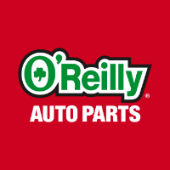-
Welcome to Auto Parts Forum
Whether you are a veteran automotive parts guru or just someone looking for some quick auto parts advice, register today and start a new topic in our forum. Registration is free and you can even sign up with social network platforms such as Facebook, X, and LinkedIn.
Engine assembly lube
-
Similar Topics
-
By Counterman
On modern vehicles, overheating is a rare occurrence thanks to high-quality hoses, thermostats and better engine management. Unfortunately, the weak point is still the coolant. Whether it’s a 100,000-mile or 150,000-mile coolant, eventually it will break down and lose the ability to protect the components with which it comes into contact.
Coolant at 100,000 miles may look the same as coolant with zero miles, as the real difference between good and bad coolant can’t be seen with the naked eye; it is in the chemistry and based on mileage.
Coolant contains additives called buffers that keep it at a neutral pH but these buffers are meant to last forever. When these chemicals become depleted, the pH can’t be controlled. It rises dramatically in a short period of time the moment the buffers are fully depleted. This is why replacing the coolant at the recommended interval is critical.
Coolant has two specifications that can be used to justify replacement — the condition of the additive package and the freezing point.
The additive package is the secret sauce for a coolant. Its main function is to control corrosion. Other components of the additive help with heat transfer and cavitation reduction. Some additive packages use seal conditioners to extend the life of the gaskets and plastic carriers.
The freezing point is measured by the overall specific gravity of the coolant, which has a direct relationship to the coolant/water mixture. This test can help spot coolant that has been compromised by the owner topping off with water. This measurement works well on systems that do not have pressurized reservoirs.
The strength or freezing point of coolant can be measured with a simple hydrometer. This device uses a calibrated float or plastic balls (not as accurate) to show the specific gravity of the coolant. This, in turn, shows how much freezing/boiling protection the coolant offers. You must remember to compensate for temperature because the specific gravity (density) of the coolant is lower when the coolant is hot.
The more professional tool for this purpose is an optical refractometer because it is very accurate and automatically compensates for temperature. Be aware: these are not simple, inexpensive tools. A refractometer can cost up to $300 or more because of the precision optics in its lens. Ethylene glycol (EG) and polyethylene glycol (PG) antifreeze have slightly different densities, so you have to use a hydrometer or refractometer with the appropriate scale (or one with a dual scale) for accurate test results.
Color-coded chemical test strips that are dipped into the coolant can be used to quickly and easily reveal the condition of the coolant. These strips of coated capillary paper react to the presence of certain dissolved minerals in the coolant and change color to give a good, marginal or bad indication of the coolant’s pH condition. Some test strips also show the concentration of antifreeze in the coolant.
The added benefit of test strips is that the results can be shared with the owner by attaching the used strip to the inspection form.
But, mileage is the gold standard for any coolant replacement recommendation. Engineers and chemists spend a lot of time formulating the coolant to match the engine and interval.
If you are performing a water pump, heater core or hose repair, recommend a full coolant flush. Just topping off the coolant can lead to a mixed bag when measuring the pH and freezing point. Also, check the specific gravity before a repair. Many customers know how to top off their coolant with water that could dilute the coolant concentration.
Selling any fluid maintenance service is difficult these days. But, if you document and educate customers on the importance of coolant, it becomes more than just an “add on” service.
The post
link hidden, please login to view appeared first on link hidden, please login to view.
link hidden, please login to view -
By Counterman
It seems like everything old is new again. TV and movie producers love to “reboot” our favorite classics, musicians regularly cover or sample from songs we all know (and sometimes loved). Fashions from high school that make us cringe will be back in style sooner or later.
It can serve to bring us together by introducing younger generations to the things their parents knew and loved, or drive a wedge between us as we argue over which version is better. For the record, I’m the grumpy old guy who argues that the original is always better … but I don’t think I ever expected to see another Mazda with a rotary engine.
The Wankel rotary engine was a unique (if somewhat flawed) design that had last appeared in the 2012 Mazda RX8. Designed by German engineer Felix Wankel in the 1950s, various displacements of the two-rotor engine appeared in Mazda production vehicles beginning in 1967. In addition to the more familiar RX7 and RX8 sports cars, Mazda also produced roughly 15,000 rotary-powered B-series pickups from 1974-1977, and even put its tiny 1.3-liter rotary into a small bus in 1974. A prototype four-rotor engine powered Mazda to a win at LeMans in 1991.
The rotary design is unique in that it only has three moving parts. An eccentric shaft and a pair of three-sided rotors move inside a pair of roughly oval chambers, completing the traditional Otto-cycle of intake, compression, combustion and exhaust without the use of reciprocating pistons or a valvetrain. Instead, the twin rotors spin around the eccentric shaft like a hula-hoop. The secret to the Wankel design is the geometric shape of the rotor, known as a Reuleaux triangle. The fattened triangular shape of the rotor has a constant width, always sealing the chamber in three places throughout the cycle … in theory.
Sealing was an issue for the early Mazda rotary engines, with the apex seals at the three points of the triangle tending to fail. Like a piston ring in a reciprocating engine, the apex seal is responsible for maintaining compression throughout the cycle. This problem dogged the brand for years, but another inherent issue is in the housing design itself.
With the intake and compression strokes occurring at the top of the oval chamber, and the combustion and exhaust events at the bottom, the housing experiences uneven heat buildup. This leads to one of the more confusing cataloging elements of the rotary Mazdas: “leading” and “trailing” spark plugs.
Due to the heat differential between the upper and lower portions of the housing, the stock spark plugs are of different heat ranges. The leading plug (the “lower” position) is a hotter plug than the trailing (“top” position), although some enthusiasts prefer to run trailing plugs in all four positions. (Each rotor/chamber houses a pair of plugs.)
Inability to meet increasingly strict fuel-efficiency and emissions requirements ultimately killed the original rotary engine, but in 2023, Mazda resurrected the design. A single-rotor 830cc Wankel engine can now be found in the Euro-spec MX-30 e-Skyactiv R-EV plug-in hybrid. Unfortunately for RX enthusiasts, the engine serves only as a range extender for the PHEV variant of the MX-30, powering a generator rather than powering the drivetrain directly.
With improved compression, gasoline direct injection and an EGR system, this engine is much cleaner and efficient than previous rotaries. We’ll see if this improved technology can make its way back into the U.S. market, but for now, the European-engineered Wankel rotary engine has returned to its roots, thanks to the Mazda engineers who have believed in this funky little powerplant for nearly 60 years.
The post
link hidden, please login to view appeared first on link hidden, please login to view.
link hidden, please login to view -
By Counterman
MAHLE Aftermarket announces the remaining two winners of the inaugural “Powered by MAHLE” Engine Giveaway.
The winner of a 302 Ford small-block engine is based in Killingworth, Connecticut, and can look to take home an engine backed with 315 horsepower and built by the technicians at Jasper Engines & Transmissions.
The Gen III HEMI 7.0L engine built by Moonshine Speed Shop is going to one lucky winner in Curran, Michigan.
“Congratulations to the winners of these premium engine parts,” said Jon Douglas, president, MAHLE Aftermarket North America. “It was awesome to be able to partner with some of our Team MAHLE members to pull together such a memorable program filled with some incredible prizes. As our inaugural ‘Powered by MAHLE’ engine giveaway comes to a close, we are very pleased with the response we have gotten from our customers and fans and want to also express our gratitude to everyone who enter our sweepstakes and made it such a success.”
In addition to the engine, all four winners of this year’s sweepstakes program received a one-night hotel stay and entry to the Performance Racing Industry (PRI) show in Indianapolis, which took place Dec. 7-9 at the Indiana Convention Center.
Winners who attended this year’s PRI show also were invited to a special “meet-and-greet” with a few “Team MAHLE” partners – the likes of which included members of Kalitta Motorsports, John Force Racing, Tony Stewart Racing and others.
The post
link hidden, please login to view appeared first on link hidden, please login to view.
link hidden, please login to view 





Recommended Posts
Join the conversation
You can post now and register later. If you have an account, sign in now to post with your account.
Note: Your post will require moderator approval before it will be visible.